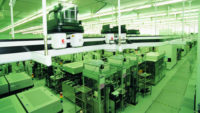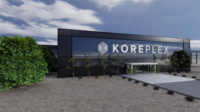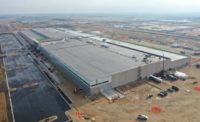Leonardo Electronics US Inc., which provides defense, security, medical and industrial products, will build a semiconductor laser manufacturing facility on 13 acres at Innovation Park in Oro Valley, six miles north of Tucson, Ariz.
The one-story tilt-up building will include manufacturing, assembly, testing, research and development, administrative and office space.
Sundt Construction, Tempe, expects to begin construction in the first half of 2022 and finish in the first quarter of 2024.
The 120,000-gross-sq-ft building, including steel, metal panels and glass, comprises 90,000 sq ft of buildout and 30,000 sq ft of expansion for cleanroom space over the next five years, says Jeremy Kwapich, preconstruction project manager for Sundt.
Kwapich adds, “Labor shortages and material delays are a real risk to every project in today’s market. Our team will continue to make design decisions that reduce the risk for the overall project.”
LEI has been in Tucson since 2009, when it acquired Lasertel, and has outgrown the original plant, which had been updated by the company since then, says Matt Keegan, president and CEO. The Arlington, Va.-based company is a U.S. subsidiary of Leonardo SpA, Rome.
“We wanted to stay close to our 200 employees and maintain access to the exceptional talent in the region, which is one of the leading photonics technology hubs in the country,” Keegan says. He estimates an investment of approximately $100 million in the area.
The total expansion will add 170 jobs to the Tucson plant, primarily in engineering, production, quality control, IT, HR, marketing, business development, purchasing and finance, says Laura Shaw, senior vice president of Tucson-based Sun Corridor Inc., the region’s economic development group. She expects a local impact of $374 million over the next 10 years.
Mountain Views
At the base of the Catalina Mountains, the master-planned Innovation Park “thoughtfully accommodates existing and future specialized manufacturing operations such as this signature corporate facility for LEI,” says Cathy Thuringer, managing director for developer Trammell Crow Co., in the firm’s Phoenix office.
“The mountain view site in the Sonoran Desert was a key element informing the design,” explains John Tran, a SmithGroup design principal in Phoenix.
“Sensitivity to the environment was a major driver in the design as well as creating an immersive work environment that responds to and takes advantage of this incredible site,” he says.
Other design challenges include providing circulation for vehicles in a parking area with a 10-ft grade change and integrating the technical process flow of product through the facility to showcase the company’s teamwork ethic.
“The design team also strived to achieve a balance of transparency and opacity based on the work completed in different programmatic areas, while being mindful of final construction cost,” Tran says.
Sustainability
Green building is central to the design, in accordance with Leonardo’s long-standing commitment to sustainable growth. For example, half the building is anticipated to include clean space, so reducing power consumption is a must. In addition, the architect is considering the addition of solar panels on the roof of the parking lot structure to offset some of the energy demand.
“By optimizing system components and capacities and utilizing a low-static recirculation design, we fall well below the ASHRAE standard for energy use,” Tran explains.
SmithGroup also will incorporate rainwater bioswales to take advantage of the site’s steep grade, which angles down to a large wash at the western boundary. The team is looking at using water from clean laboratory processes for use in the cooling tower.
“The efficiency gains in a new purpose-built facility are enormous when compared to working inside a pre-fab envelope,” Keegan says. “In parallel, we really wanted to focus on creating a welcoming, state-of-the-art environment that the staff can feel proud working in.”





Post a comment to this article
Report Abusive Comment